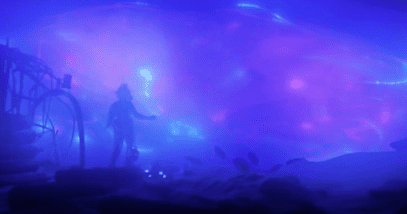 Weird Stuff
Weird Stuff  Weird Stuff
Weird Stuff  Miscellaneous
Miscellaneous Top 10 Things Crypto Was Supposed to Change & What Actually Did
 History
History 10 Huge Historical Events That Happened on Christmas Eve
 Music
Music 10 Surprising Origin Stories of Your Favorite Holiday Songs
 History
History 10 Less Than Jolly Events That Occurred on December 25
 Weird Stuff
Weird Stuff 10 Funny Ways That Researchers Overthink Christmas
 Politics
Politics 10 Political Scandals That Sent Crowds Into the Streets
 Weird Stuff
Weird Stuff Ten Bizarre Facts About The Doge Meme
 Our World
Our World 10 Ways Your Christmas Tree Is More Lit Than You Think
 Movies and TV
Movies and TV The 10 Coolest Stars to Set Sail on The Love Boat
 Weird Stuff
Weird Stuff 10 Fascinating Facts You Might Not Know About Snow
 Miscellaneous
Miscellaneous Top 10 Things Crypto Was Supposed to Change & What Actually Did
 History
History 10 Huge Historical Events That Happened on Christmas Eve
Who's Behind Listverse?

Jamie Frater
Head Editor
Jamie founded Listverse due to an insatiable desire to share fascinating, obscure, and bizarre facts. He has been a guest speaker on numerous national radio and television stations and is a five time published author.
More About Us Music
Music 10 Surprising Origin Stories of Your Favorite Holiday Songs
 History
History 10 Less Than Jolly Events That Occurred on December 25
 Weird Stuff
Weird Stuff 10 Funny Ways That Researchers Overthink Christmas
 Politics
Politics 10 Political Scandals That Sent Crowds Into the Streets
 Weird Stuff
Weird Stuff Ten Bizarre Facts About The Doge Meme
 Our World
Our World 10 Ways Your Christmas Tree Is More Lit Than You Think
 Movies and TV
Movies and TV The 10 Coolest Stars to Set Sail on The Love Boat
Movies and TV
Random List
 Movies and TV
Movies and TV The 10 Coolest Stars to Set Sail on The Love Boat
 Movies and TV
Movies and TV 10 Fictional Kings Who Go from Good to Bad
 Movies and TV
Movies and TV 10 Wildly Different Movie Takes on Nuclear War
 Movies and TV
Movies and TV 10 Nightmare-Inducing Kids’ TV Characters That Still Freak Us Out
 Movies and TV
Movies and TV 10 Oddly Specific Horror Movie Subgenres You’ve Probably Never Heard Of
 Movies and TV
Movies and TV 10 Of The Strangest Deaths That Occurred During Movie Productions
 Movies and TV
Movies and TV 10 Unexpectedly Deep Messages in ’70s Children’s TV Shows
 Movies and TV
Movies and TV 10 Terrifying Horror Movies Set in Space That Aren’t From The Alien Franchise
 Movies and TV
Movies and TV 10 Best Bobby Hill Quotes From King Of The Hill
 Movies and TV
Movies and TV 10 Underrated Giallo Movies That Deserve Your Attention
 Movies and TV
Movies and TV 10 Thrilling Sci-Fi Movies That Take Place At Sea
Editor’s Picks
 Movies and TV
Movies and TV 10 Psychiatric Diagnoses Of Horror Villains And Their Victims
 Movies and TV
Movies and TV 10 Greatest Movie MacGuffins Of All Time
 Movies and TV
Movies and TV 10 Iconic Movie And TV Restaurants That Are Actually Real
 Movies and TV
Movies and TV